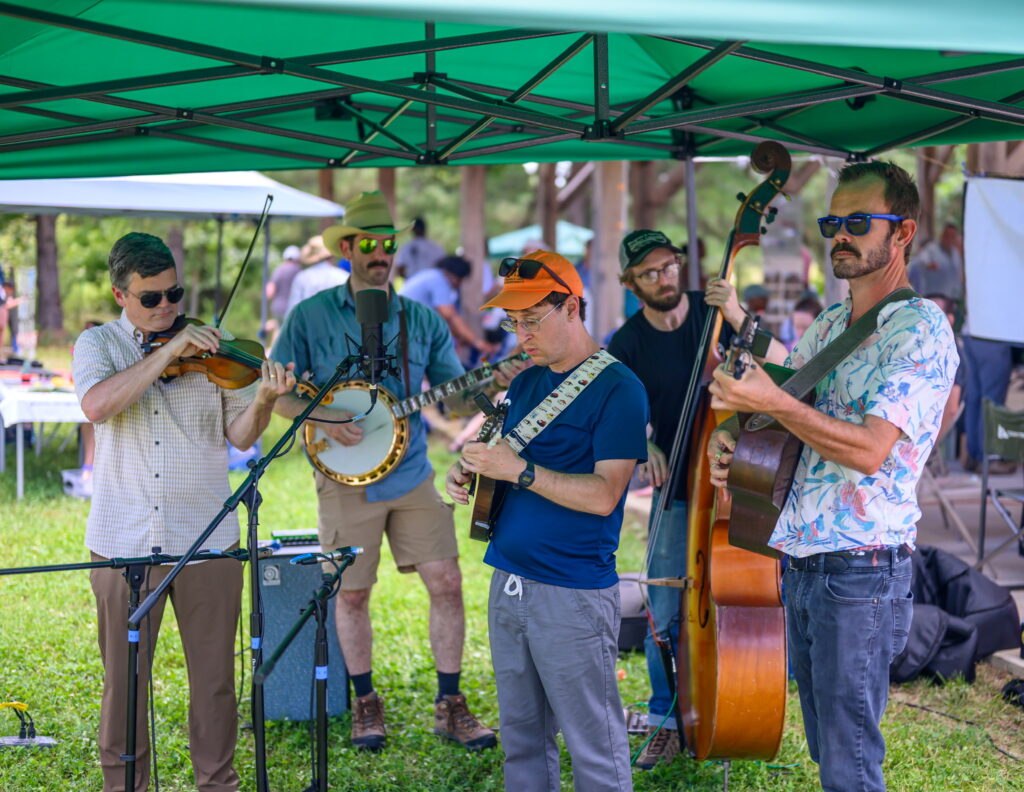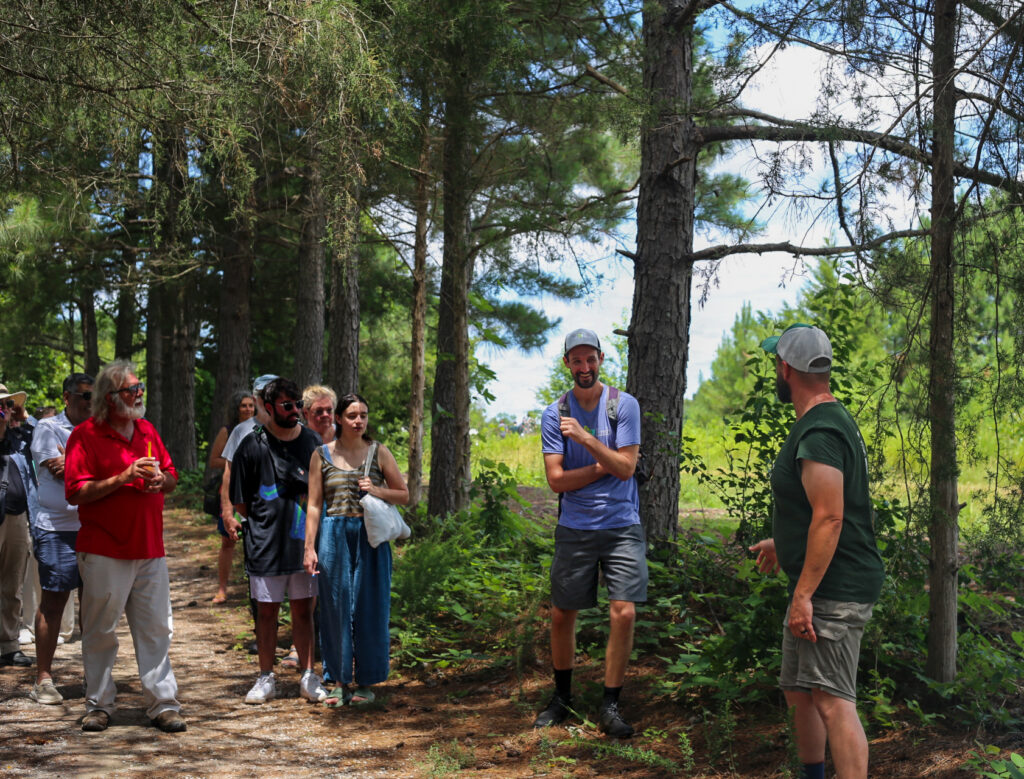By Florencia Loncán, Communications Associate
On Saturday, June 14, Triangle Land Conservancy (TLC) hosted its inaugural Land & Harvest Festival at Bailey and Sarah Williamson Preserve. The community event celebrated the richness of local Wake and Johnston County agriculture, environmental conservation, and the connections that tie us all to the land.
Over 230 people across the Triangle found their way to the Williamson Agriculture Pavilion where they enjoyed local food and beer trucks, an expo of environmental partners, guided hikes, live music, and of course the main attraction: the farmers market. Five local farms were vendors at the event: Urban Community AgriNomics (UCAN), Ayers Family Farm, Footprints in the Garden, and two Williamson-based farmers – Horn and Wren Teaching Farm and Karen Community Farm.


Along with Horn and Wren and Karen Community Farm, three other farmers are based on the Williamson property through the Williamson Farm Program: Leaf and Limb, Farm of Zebulon, and Broadwell Farms. In addition to offering a selection of fresh, local produce, the festival also gave attendees the opportunity to participate in guided hikes led by TLC staff and Leaf and Limb. These hikes covered the history of Williamson and provided an up-close look at farming on a nature preserve.
Managed by Heather Szaro, TLC’s Farm Coordinator, the Williamson Farm Program aims to mitigate barriers to entry for new farmers.
“We decided to put on the festival so we could bring the community to the Williamson Preserve to learn more about our Agriculture Program and the local food community,” shared Szaro. “The main focus of the event was for the farmers to be able to sell their produce and gather support from their community, which was far and away achieved.”

The Williamson Preserve has 120 acres of farmland committed to the Agriculture Program, 72 of which are currently being farmed. Through this Program, TLC provides beginning farmers with affordable access to land, reduced equipment costs, and the certainty that their farms will not be shut down due to development.

Lilly Macnell from Horn and Wren Farm shared her thoughts at the festival. “I think that the program that [TLC has] really makes it more accessible,” she begins. “We wouldn’t have been able to do this without the partnership because we can’t afford five acres of land in a great spot, but here we can use the communal tools and the communal space and really try to develop something that we wouldn’t have the resources to do otherwise.”
Supporting local farms and food is a core part of TLC’s conservation mission. According to the American Farmland Trust, North Carolina is second in the nation for projected farmland loss by 2040. Within the state, Wake County and Johnston County are in the top 40 counties nationwide with the most agricultural land projected to be converted to urban and highly developed (UHD) and low-density residential (LDR) uses by 2040. The Williamson Farm Program is an example of how land trusts can not only support local food systems by conserving farmland but by providing it to new farmers. This helps farmers to grow their business and disseminate their food into the community they’re farming in.
Events like the Land and Harvest Festival aim to further support not only Williamson Farmers, but local farming overall. The festival offers a space to foster connections, support local businesses, and learn more about the conservation work being done in the Triangle region.
“I am so grateful to everyone that filled the space, enjoyed the food, music and were a part of supporting their local farmers,” Szaro shared.
If you or anyone you know is interested in being a part of the Williamson Farm Program, please contact Heather Szaro at hszaro@triangleland.org

